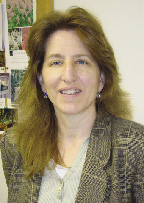Did you know that Connecticut, along with much of the Northeast, has some of the highest population densities and percent impervious cover in the nation? While the Northeast may be small in area, our dense population and current zoning practices have resulted in tens of thousands of acres of buildings and rooftops.
These little known facts may only evoke thoughts of suburban sprawl to the vast majority but for architectural designers and engineers, as well as developers and building owners, however, it presents a unique opportunity to mitigate the many environmental impacts of continued development and at the same time increase the value of their projects. By utilizing various innovative technologies known as sustainable design, they can get projects permitted faster, create higher quality buildings that are worth more and lease faster, project a positive public image and simultaneously reduce their environmental footprint. One particular approach that is rapidly gaining adoption is the extensive green roof system.
During major rain events, stormwater runoff from impermeable surfaces such as streets, parking lots and buildings typically does not infiltrate the ground and can cause flooding, system backups or discharge of untreated waste, particularly in urban areas where stormwater and sewage flow through a combined system to a local treatment facility. Green roofs are a sustainable and effective building technology developed to address these concerns. Green roofs serve to retain significant amounts of precipitation (40-60% annually, and as high as 95% for any given storm) as well as delay runoff that does occur, giving strained infrastructure time to catch up. Green roofs also reduce the overall carbon footprint of a building, increase design aesthetics, and improve surrounding water and air quality. From a developer's perspective, all of these added benefits can increase property value and consequently reduce the payback period.
Local Impact
Weston Solutions, Inc., a 50-year-old environmental engineering and redevelopment firm located in Glastonbury, co-developed along with ABC Supply Company, a modular green roof system called GreenGrid. The GreenGrid green roof system has been carefully engineered to address key environmental concerns like reduced carbon footprint and stormwater management while maintaining a simple and effective design. With decades of experience in environmental remediation, Weston understands the importance of maintaining and sustaining a local community and its environment. The majority of the components of the GreenGrid system come from local suppliers and design of each green roof system is completed by staff that work and live locally. Weston Solutions has also found a like-minded partner in Sunny Border Nurseries, Inc. located in Kensington to grow and maintain the modules before installation. In addition to being part of the growing "green-collar economy," local production of drought-tolerant vegetation planted in medium that originates in the Hudson River Valley, reduces fuel consumption in shipping, post-industrial materials, associated carbon emissions and most importantly project costs for the building owner.
Design Capabilities
In most cases, if green buildings are designed and built correctly, they do not appear different from traditional buildings. Building occupants find the space comfortable, well lit, and pleasant without being aware of high-efficiency mechanical equipment, state of the art low-water use fixtures, pervious asphalt parking lot or Energy Star rated appliances and windows. One, very effective and head-turning, way to make a clear statement about the other, less visible sustainable design features included in a project, however, is with a green roof. Green roofs offer an aesthetically pleasing (and newsworthy) commitment to low impact development and strongly suggest other green features hiding inside the shell of the building. Accessible or visible green roofs in particular will often draw buyers/renters and may increase the building value through added amenity space. With traditional design, roofs typically have been relegated to storing mechanical equipment and nothing more, but a green roof can transform a normally wasted space into a usable and beautiful rooftop vista that brings environmental and financial benefits to the building owner and the community at large.
A Local Business Partnership
Sunny Border Nurseries, Inc. is an expert grower of sedums and other adaptable green roof plants including Opuntia (prickly pear), Allium (chives) and more than 100 varieties of Semipervivums (hens & chicks). Sunny Border's expertise in successful green roof plants combined with Weston's engineering capabilities and experience in the environmental industry has provided a stable and lasting business relationship. Since 2003, Weston and Sunny Border have been working together to create site and client-specific plant mixes to make unique green roof designs. Since all staff is local, the business relationship has proved that GreenGrid is one of the most efficient and flexible green roof systems available.
Sioux Mackey is sales manager at Sunny Border Nurseries, Inc., Kensington, Conn.
Tags:
What are the benefits to property owners and the environment when using a green roof system?
April 02, 2008 - Connecticut









